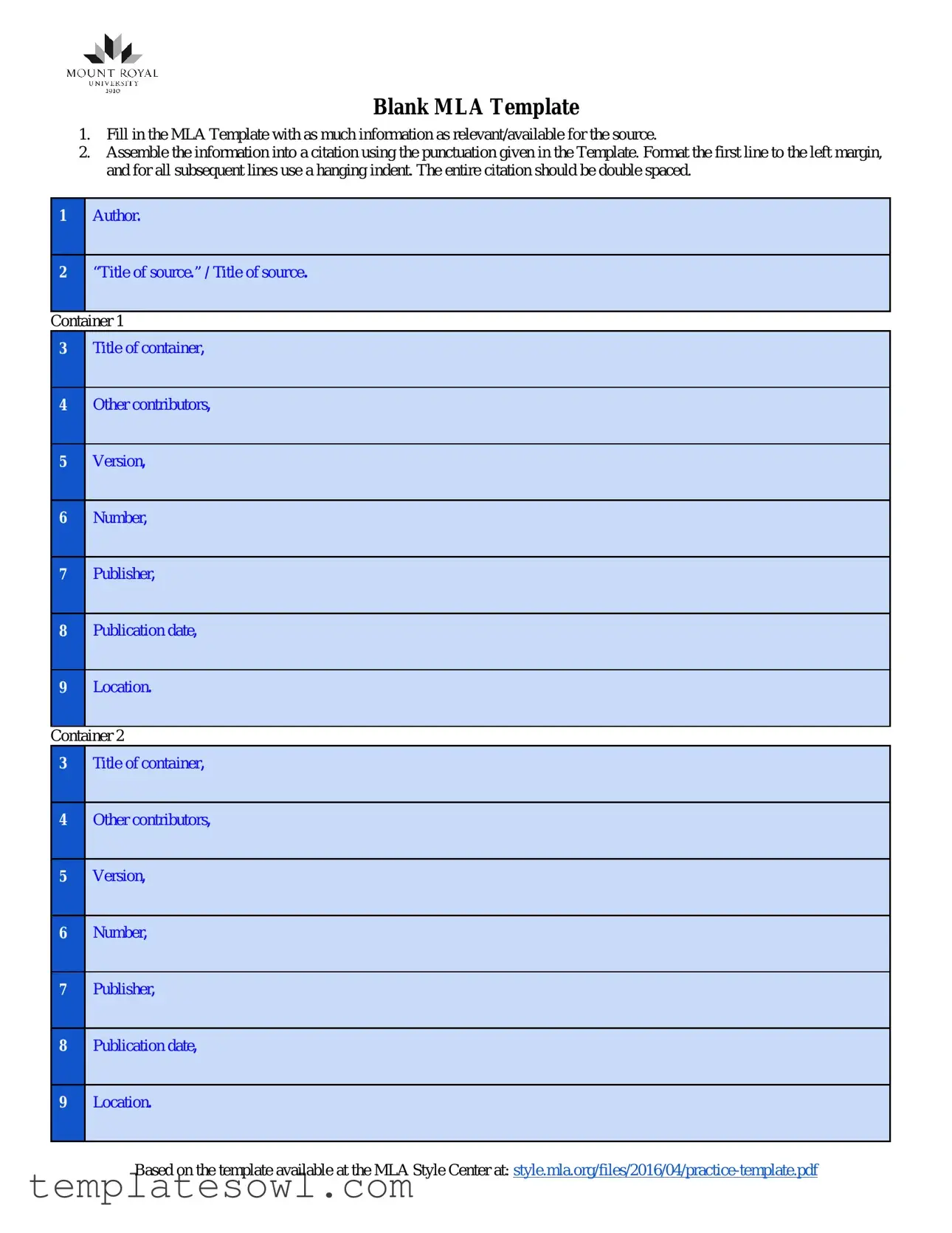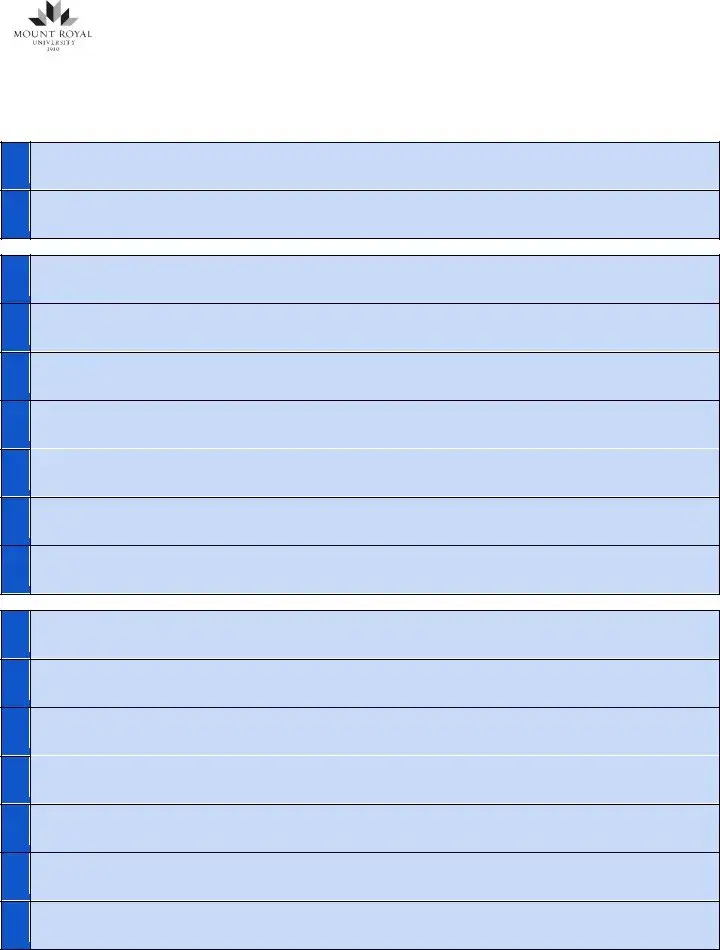What is the purpose of the Citation Format form?
The Citation Format form is designed to help individuals create accurate citations in the MLA style. This form provides a structured template for gathering and organizing all relevant information needed to cite various sources correctly.
How do I fill out the MLA Template?
To fill out the MLA Template, first enter as much information as is available for your source. Follow the numbered sections in the template, ensuring that each piece of information is placed in the correct order. Adhere to the punctuation and formatting rules specified in the template.
What formatting should I use for the citation?
The first line of your citation should be aligned with the left margin. For any subsequent lines, a hanging indent is required, meaning they should be indented slightly from the left margin. Additionally, ensure that the entire citation is double-spaced.
What information is included in the Citation Format?
The citation should include several key elements: the author's name, the title of the source, information regarding the container (like the title of the container, other contributors, version, number, publisher, publication date, and location), and repeat this for any additional containers.
Where can I find the MLA Style Template?
The MLA Style Template can be accessed through the MLA Style Center. The link to the template is: style.mla.org/files/2016/04/practice-template.pdf.
What is a hanging indent, and how do I create one?
A hanging indent is a formatting style where the first line of a paragraph is flush left, while subsequent lines are indented. This can typically be created in word processing software by adjusting the paragraph settings to set a specific indentation for the left margin of subsequent lines.
Is it necessary to include all information in the Citation Format?
While it is important to provide as much information as possible, if certain details are not available, simply omit them. The form is flexible, allowing you to include only the relevant details for your specific source.
Can I modify the MLA Template to fit my needs?
The MLA Template is a guideline intended for standard citation practices. While minor adjustments may be necessary for specific sources, major modifications could lead to inaccuracies. It is advisable to adhere to the original structure and formatting rules outlined in the template for consistency.


